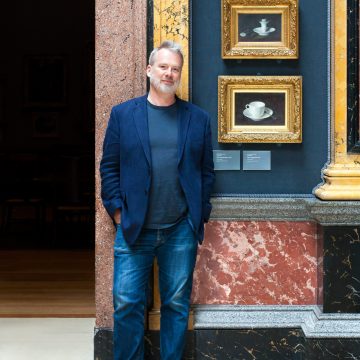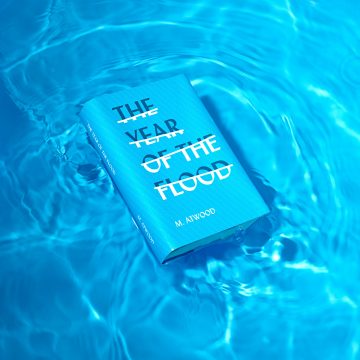The art of borrowing
Ever fancied a Nicholson or Gaudier-Brzeska on your wall? Every year since 1957, students have been pitching up at Kettle’s Yard in the hope of claiming a master.
Miriam Margolyes (Newnham 1960) had never heard of Henri Gaudier-Brzeska. But a small sketch of two muscular boxers, spotted on a visit to Kettle’s Yard in 1961, changed all that. “I don’t know anything about art but something about that picture took my fancy,” the actor recalls.
And at most galleries, that would be that. But at Kettle’s Yard, they do things a bit differently. For the past 67 years, students have been decorating the walls of their College rooms with pieces borrowed from the collection. These days, students pay a small fee and careful records are kept. But in Margolyes’ day, when Kettle’s Yard founder Jim Ede and his wife Helen were still in residence, the picture loan scheme was rather more informal. “I just picked it up and went away,” she says.
The fact that you were allowed to take something like that into your own living space was such an amazing kindness
The Gaudier-Brzeska drawing hung “in place of honour” on the wall of Margolyes’ room at the top of Newnham’s Pfeiffer Tower for the duration of her second year. “When you take a pleasure in a picture, you look at it all the time,” she says. “Only afterwards did I discover that he was an extremely well known artist.”
At the end of Easter Term, Margolyes returned the picture and borrowed another, this time a painting of boats by Cornish artist Alfred Wallis. “The fact that you were allowed to take something like that into your own living space was such a present, an amazing kindness,” she says. “And it started me realising that art is something that is available. It gave me a kind of audacity that I could make a choice and put it on my wall.”
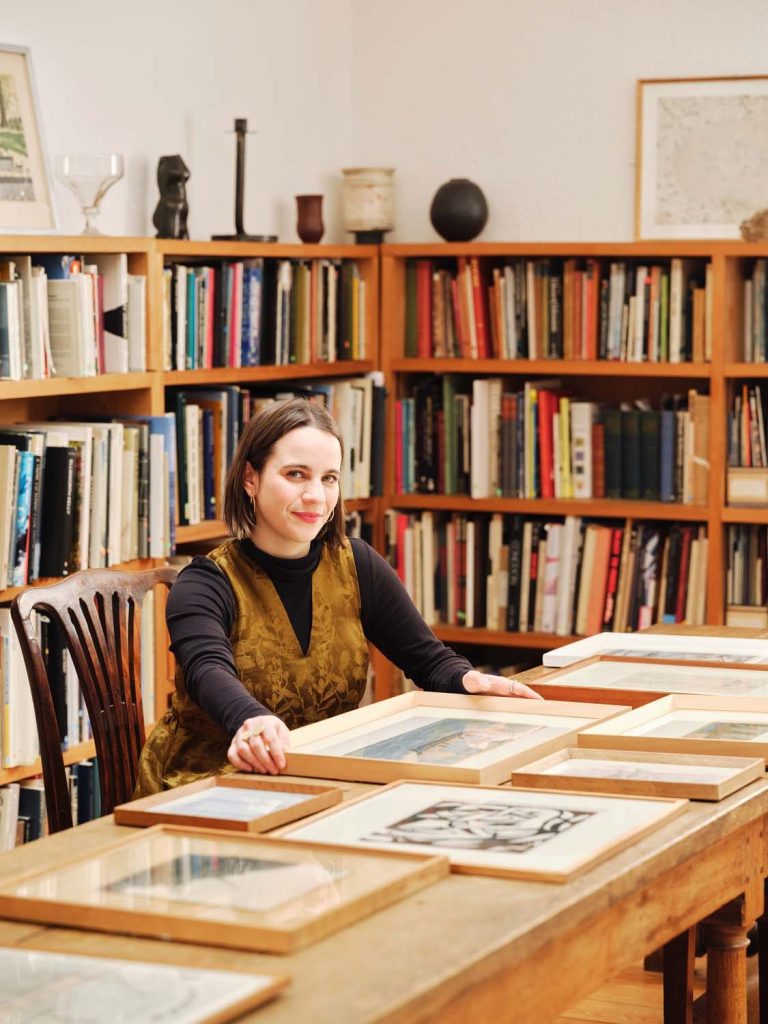
With works from the Kettle’s Yard Reserve Collection and Student Loan Collection by artists including Alfred Wallis, Ben Nicholson and Henri Gaudier-Brzeska.
That audacity stayed with her. After Cambridge, Margolyes got into the habit of buying a piece of art with every new acting job she booked. Her favourites were political cartoons of the early 19th century by the likes of James Gillray and Thomas Rowlandson. She still collects them to this day.
Margolyes is not the only student for whom the picture loan scheme has left a lasting legacy. Lesley Cotton (Sidney Sussex 1983) was studying architecture when she first came across Kettle’s Yard, which was by then part of the University, having been donated by the Edes in 1966. The couple had moved out in 1973 but the domestic backdrop they had created for their collection was wonderfully unchanged – as is still the case today.
“I remember ringing the doorbell and being greeted by a volunteer who would take you round,” Cotton says. “There was almost a maternal feel about it when you were first away from home, of it being a sanctuary from everything else.”
The picture loan scheme enabled Cotton to take a little slice of that sanctuary with her when she left the gallery. She can’t remember much about the minimalist abstract drawing she borrowed, but the effect it had on her is still vivid in her mind.
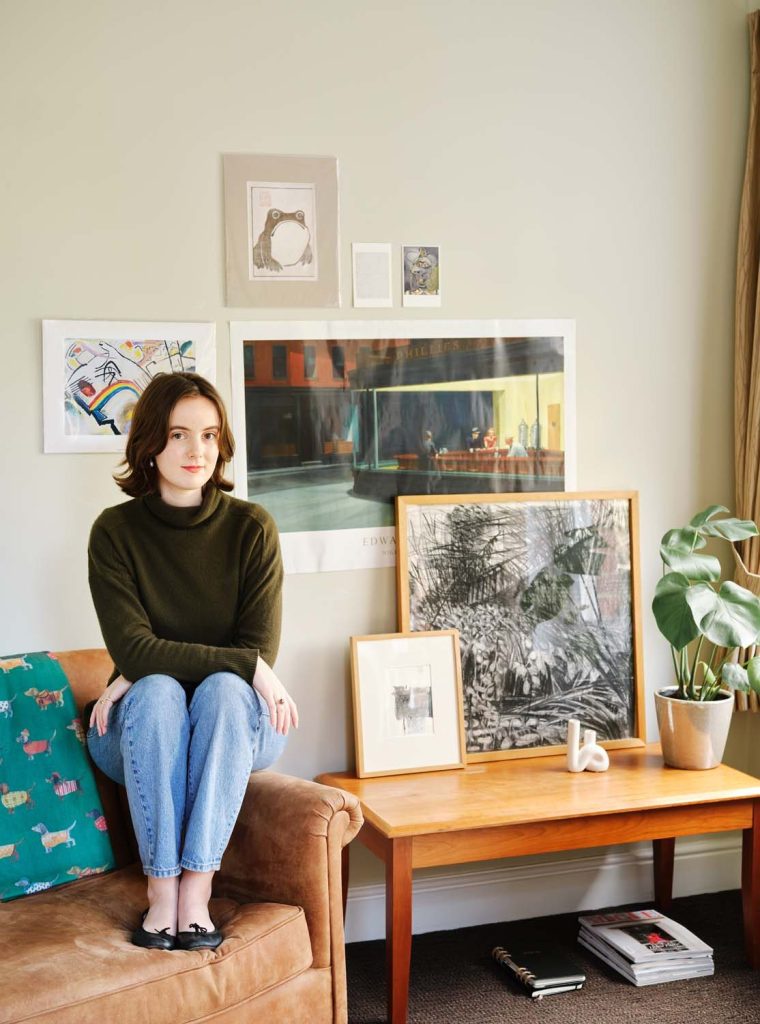
Alongside works from the Student Loan Collection by: Joan Key, a contemporary artist based in London known for her minimalist paintings and prints; and Trevor Bell, an abstract painter who drew inspiration from St Ives in Cornwall.
“It represented a calmness. Terms are very short and there is a lot of work to get through. It was hard,” she explains. “So the picture was something calm that I could come back to.”
It was also a source of inspiration, a way of keeping her eye on the prize when the going got tough. “It represented the sorts of things that I wanted to design when I was in my professional life,” Cotton says. That inspiration has come good: the Edes’ vision for how artworks and natural objects can work together in a domestic setting, as well as their instinct for the play of light, is a strong feature of Cotton’s architectural practice today, she says.
Jim Ede was always interested in the idea that you will live a better life if you live with art
The Edes had moved to Cambridge in 1956, following stints in London, Tangier, the US and France, bringing with them an art collection that reflected the friendships Jim built over his time at art school, and then as a curator at what was to become the Tate. In Cambridge, they bought and restored four derelict cottages in the hope of creating “a living place where works of art could be enjoyed… where young people could be at home, unhampered by the greater austerity of the museum or public art gallery”.
Then, as now, works by Ben and Winifred Nicholson, Joan Miró, Henry Moore, Barbara Hepworth and many more leading 20th century artists are displayed alongside domestic furniture and natural objects, all without labels getting in the way of the experience.
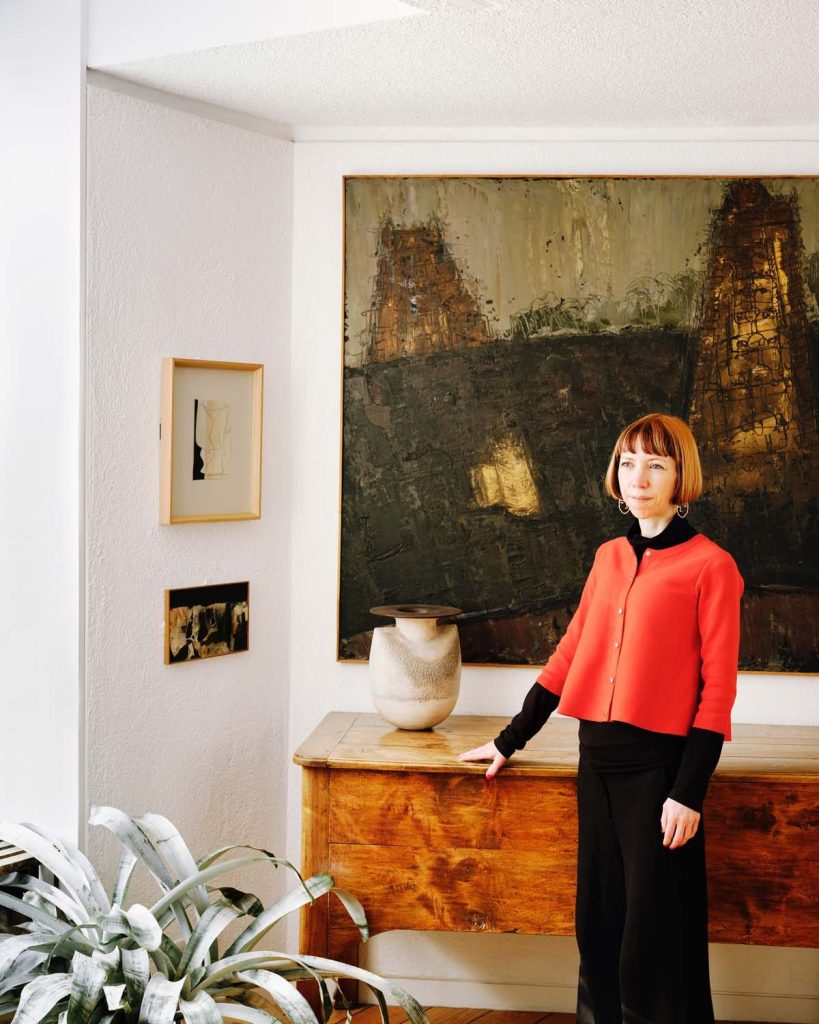
Alongside artworks from the Permanent Collection by Ben Nicholson, Alberto Burri and William Congdon, and a vase by Hans Coper.
“Jim Ede was always interested in the idea that you will live a better life if you live with art,” says Andrew Nairne, Director of Kettle’s Yard. Also central to his philosophy was “learning to look” – the idea that pictures, like people, take time to get to know and understand. “He would welcome people in and say: ‘I’ll tell you a few things but go off and wander on your own,’” says Nairne.
Letting students – including now famous names such as the physicist Stephen Hawking (Caius 1962) and Nicholas Serota (Christ’s 1965), former director of the Tate – take their pick from the unhung artworks stacked in the attic was just the natural extension of that thinking.
More than 6,000 student loans later, the scheme is still going strong. But now, the students who queue up along Castle Street each Michaelmas Term to borrow the 90 or so works included for selection are not given any advance information about them. Students must simply choose the art that appeals to them on the day. “Some people spend a really long time considering their choices,” says Naomi Polonsky, Assistant Curator at Kettle’s Yard and the person responsible for running the scheme. “There was one person this year who must have been in there for a good half hour weighing up which picture they wanted to take.”
Sam Cornish (Churchill 2002), who studied history of art and today writes about and curates exhibitions of abstract art, can’t remember how he chose the two small John Blackburn paintings that ended up on the walls of his first-year bedroom back in 2002. But having got them home – a walk up Madingley Road in the company of a friend who’d nabbed a large drawing of Leda and the Swan – Cornish really appreciated “having a proper thing on your wall that you could see in different lights at different times of the day,” he says. “Mostly you don’t notice it, then every now and then you do and that’s what’s so great about it.”
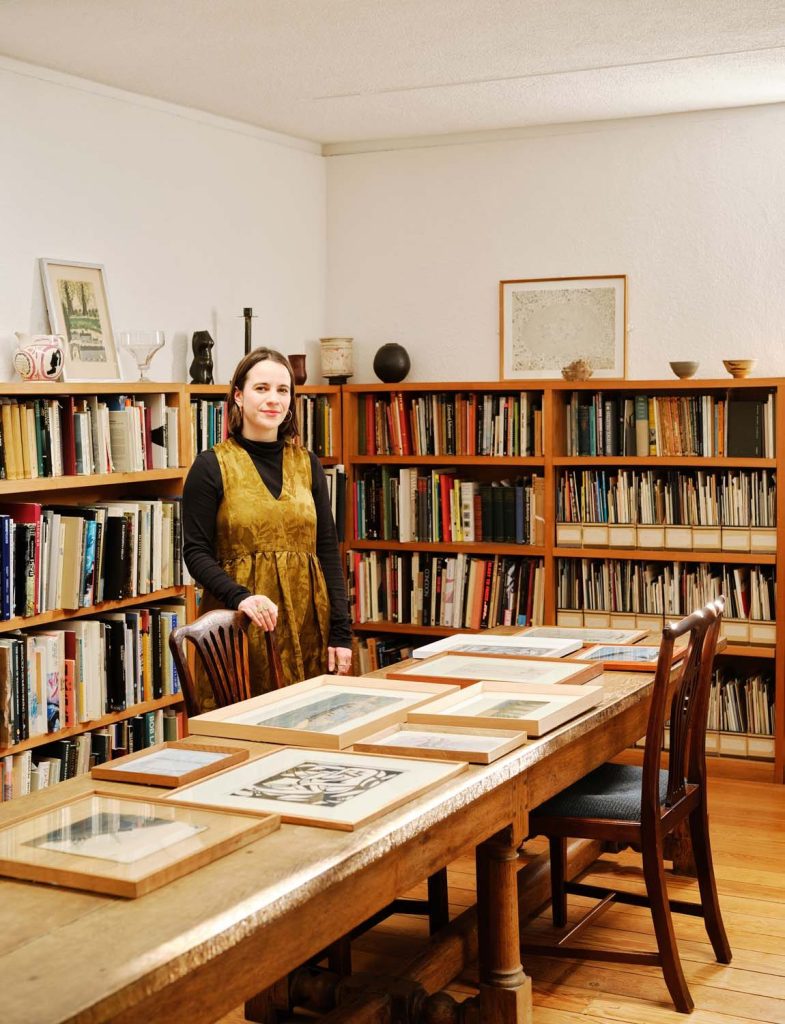
The lack of hierarchy associated with the scheme is central to its success, believes Emma Davis (Emmanuel 2002). No art knowledge is required, you don’t need to be studying art history to borrow a picture, and students at Anglia Ruskin are also welcome. Davis herself borrowed a dark abstract mixed media work – “a combination of Ben Nicholson and Alberto Burri” as she recalls – in her third year studying maths. And she was so affected by the experience (the work was “quite precious, not like one of my photos or posters”) that since 2020, Davis has been sponsoring the scheme to cover the £20 loan fee and £30 deposit for up to 25 students each year. “£50 is a pretty chunky amount when you consider you can buy a poster at the Freshers’ Fair for £5. I thought, if it was free, would you choose the poster or would you choose the art?” Reflecting on an experience that triggered her own 20-year collecting habit, she says it taught her both how to live with art and how her tastes might evolve.
Imogen Grimes (Art History, Third Year) has borrowed works from Kettle’s Yard for two years running now. Last year she picked a large ink drawing and a tiny oil painting, works that travelled home with her to Wales and back at the beginning and end of each term when she had to vacate her room in the holidays. “I almost cried when I returned them,” Grimes says. “I came back to my room and it felt very bare. Even now, I miss them.”
She expects that handing back her current loans – two abstract paintings, one large and free-form, one small and geometric – will be even more of a wrench. “At the end of this year I’m not just losing the pictures, I’m leaving Cambridge too,” says Grimes. “It’s going to be emotional. But the loan scheme has given me a taste for collecting art without spending a fortune – I love thinking about what I’ll buy in the future.”
Kettle’s Yard has embarked on an ambitious endowment campaign to raise £5m by 2027 through the Jim & Helen Ede Fund. To find out how you can get involved, please contact Holly Kavanagh at holly.kavanagh@admin.cam.ac.uk

